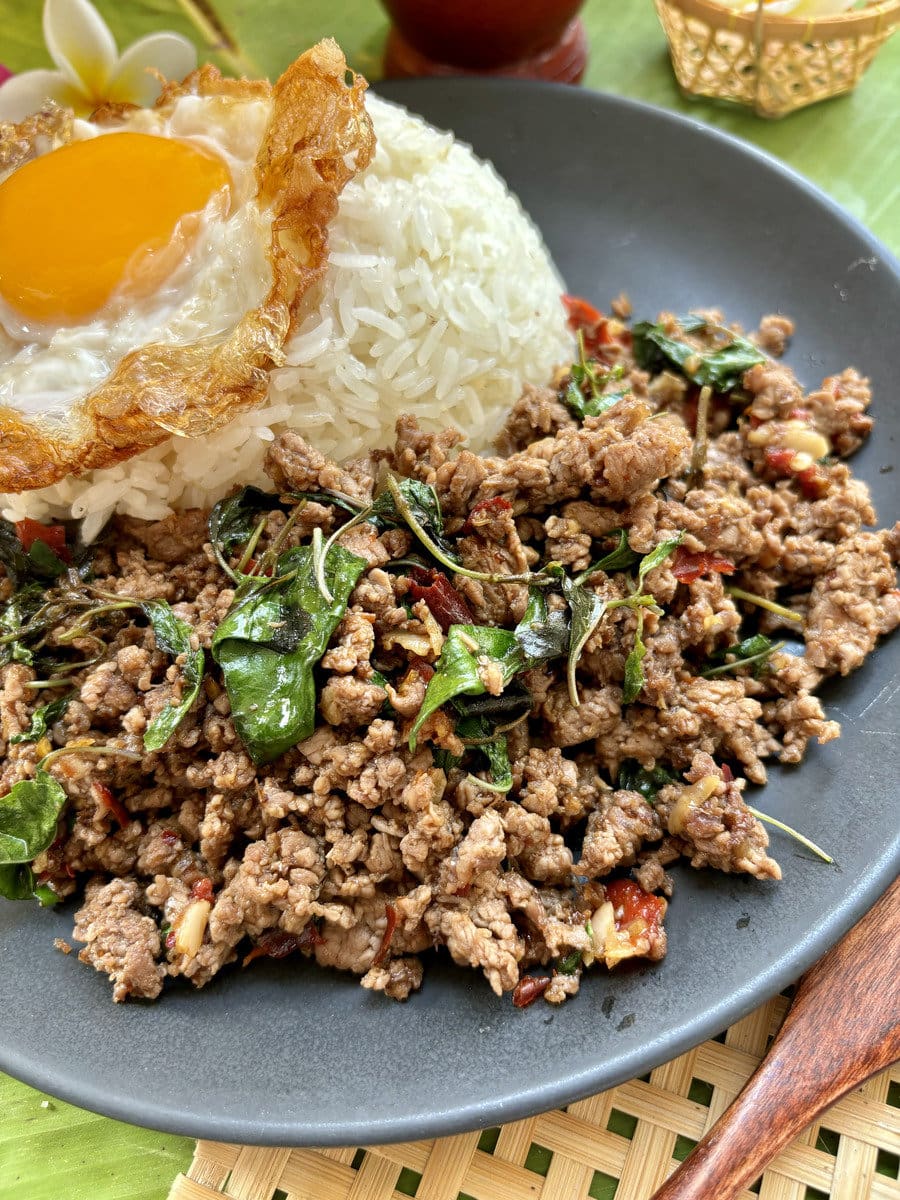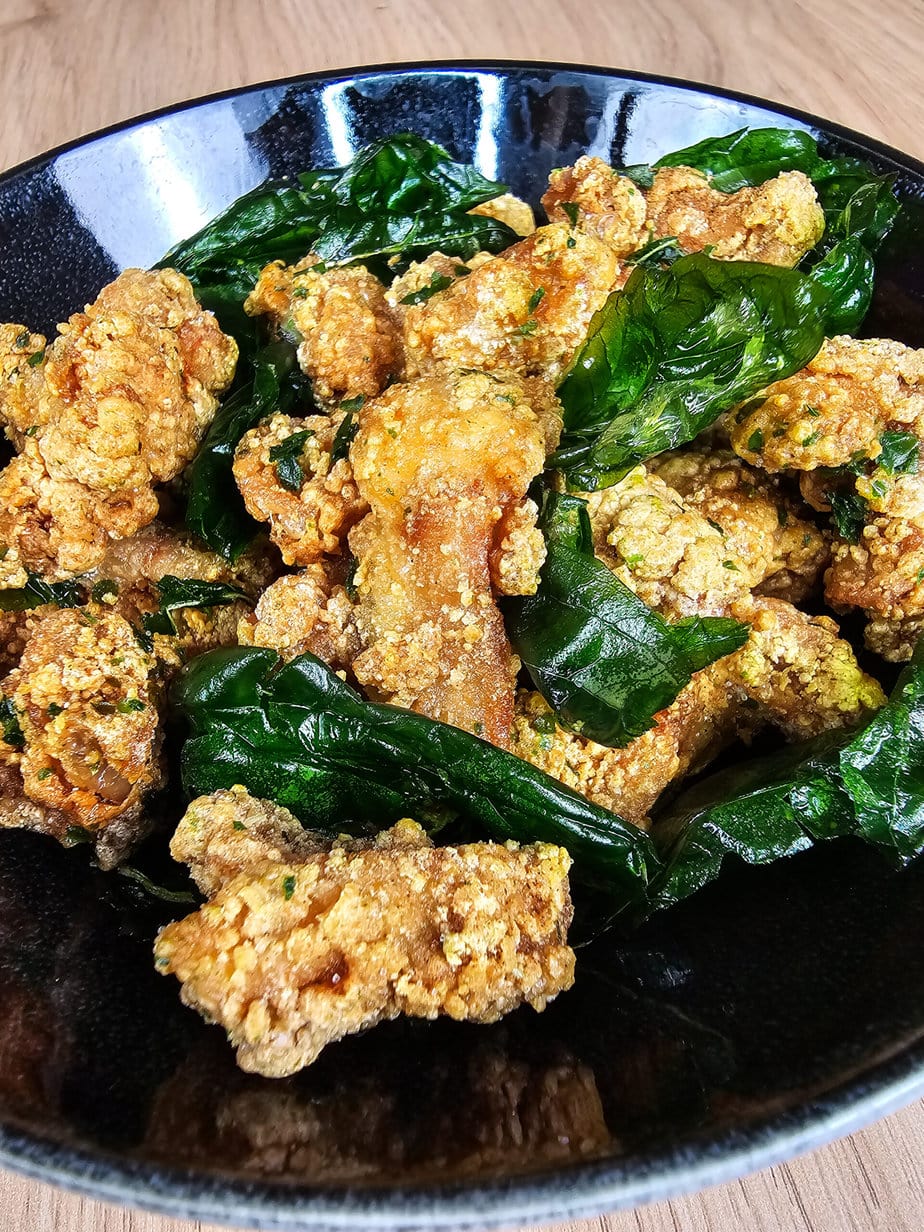Native to South Asia, holy basil is prized in India and Thailand as a remarkable aromatic herb, cultivated for its distinctly spicy flavour. As its name implies, it is anything but ordinary!
What is Thai holy basil?
Thai holy basil, also known as Thai basil, “Tulsi” in India, or liquorice basil, is an annual herb with pink-purple stems and flowers. Although it belongs to the basil family, its taste and aroma are quite different from the sweet basil we usually use. Several cultivars exist, including a purple variety with an even stronger flavour.
Widely used in Thai cuisine and Indian cooking, it is prized for its aniseed, spicy flavour accented with notes of liquorice. The plant is considered sacred in Buddhism. Beyond its culinary appeal, it is also valued across Asia for its medicinal virtues.
Why is it called “holy basil”?
Thai holy basil owes its name and its reputation to its long-standing role in Hindu ceremonies, a tradition that continues today. “Tulsi” literally means “the incomparable” in Sanskrit. According to Hindu mythology, Tulsi embodies Lakshmi, the consort of Vishnu, one of Hinduism’s principal deities. Its legacy spreads beyond India and Thailand, as holy basil was also prized in ancient Greek and Roman medicine.

What does Thai holy basil taste like?
Its uniqueness lies in its flavour: Thai holy basil is lightly aniseed and peppery, with hints of mint, liquorice and lemon. Overall, it is considered sweeter than common basil.
What is the difference between Thai holy basil and traditional basil?
Thai holy basil is sweeter than traditional basil, so it is not ideal for pesto, which owes its appeal to a fresh, salty kick.
It is also reputed to contain a higher concentration of active compounds than sweet basil. Classified as an adaptogen (like ginseng), it is believed to help the body adjust to stress and restore balance without causing toxicity.
What are the benefits of Thai holy basil?
When used medicinally, the leaves and flowers are prepared as infusions or decoctions. They are valued for their hypotensive, anti-inflammatory, analgesic, digestive, sedative, diuretic, and antibacterial effects… in short, a real tune-up for the body!
How to use Thai holy basil in cooking?
Like ordinary basil, holy basil is most often used raw, though it can be cooked. Keep in mind, however, that heat mellows its aroma. Because its leaves are thicker than those of other basils, you can add them at the very end of cooking to perfume sauces. Holy basil pairs wonderfully with noodles (such as red curry noodles), shellfish and fish, poultry, and lemon- or olive oil-based sauces. You will also find it in Thai green curry chicken

In India, it is consumed as an infusion, while in Thai cuisine you will find it in the traditional pad kapao recipe, a stir-fried dish made with this basil, meat or seafood, oyster sauce and fish sauce, and also in Taiwanese cooking with San Bei Ji
How to replace Thai holy basil?
Because Thai holy basil is not always easy to source, you can substitute similar herbs such as sweet Thai basil or even regular basil. Others suggest mint, oregano, rosemary, or fennel. These herbs share comparable qualities and can also lift your dishes.

Where to find holy basil?
You can usually find holy basil in Asian grocery stores. It is also easy to grow as long as the soil is well-drained and, above all, sunny, just like common basil.
How to store Thai holy basil?
Thai holy basil is at its best when fresh and keeps only briefly, so try to use it within two days.
To extend its life, freeze the leaves in oil-filled ice-cube trays. You can also dry the leaves and store them, like any spice, in an airtight container kept away from light.

